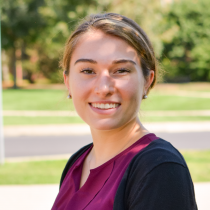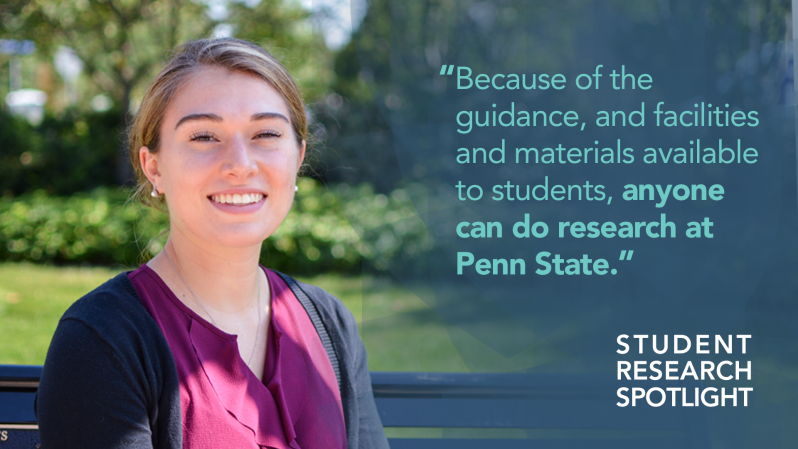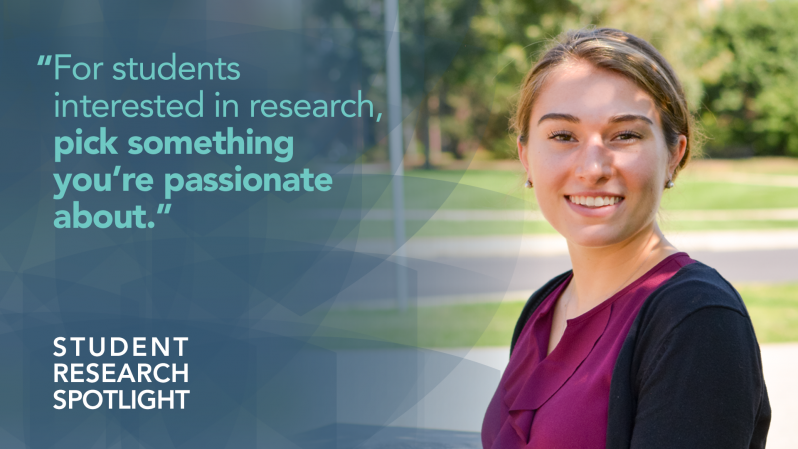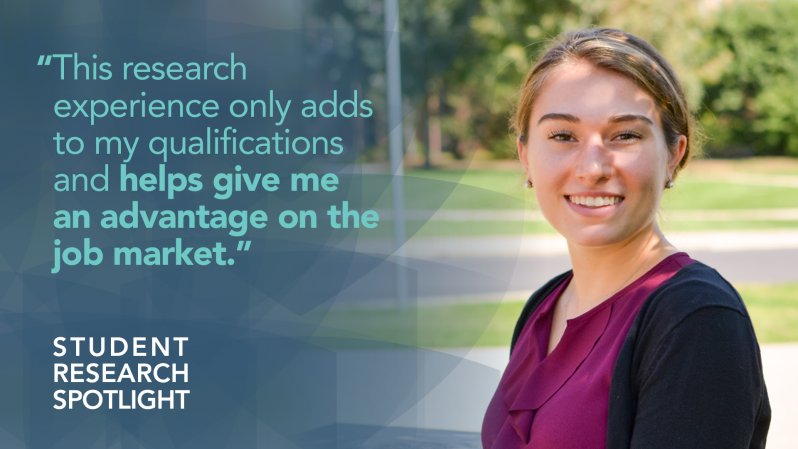Student Research Spotlight - Madison Galascio


Madison Galascio noticed a discrepancy when she came to college: college students seemed to have the proper knowledge and education about healthy foods, but weren’t actually eating healthy.
As someone who’s always been passionate about nutrition, she wondered why.
Over the years as a child and teen athlete, Galascio began to understand how much of an impact the food we eat has on our performance – physically in sports, mentally in school, and countless other ways. She didn’t understand why knowledge of healthy eating among her peers didn’t match their eating behaviors.
Thanks to countless research opportunities and support available at Penn State, Galascio got the chance to turn her question into a research project.
Working with Melissa Bopp, associate professor of kinesiology, Galascio, a senior Nutritional Sciences major who is minoring in Kinesiology, created a nutrition survey for students participating in fitness assessments at the Center for Fitness and Wellness.
Located in the Intramural Building on the University Park campus, the Center for Fitness and Wellness provides health and fitness assessment and education for students, faculty, and staff at Penn State. The center is supported by partnerships between the Department of Kinesiology, the College of Health and Human Development and the Office of Student Affairs, among others.
The survey, which Galascio began distributing to students last semester, aims to find the barriers to healthy eating among college students by asking them questions about their nutrition knowledge and habits. Some of these barriers might include cooking skill level, access to healthy foods, peer influences, alcohol and perceived time use – the amount of time it takes to cook a healthy meal.
Galascio hopes the research project will give her more insight into nutrition among college students, that she can apply in the classroom, in her extra-curricular activities, and as she pursues a career after college. She also hopes the findings help those in the medical field.
“I hope the results are influential for college students,” Galascio said. “Additionally, I hope that finding an answer to this problem would be helpful to health professionals so they can intervene when necessary, and help students make positive changes with their health.”
At the end of the fall 2018 semester, the survey had around 40 responses. Galascio is continuing her research this semester in hopes of getting more responses. In February she plans to analyze the results and then present her research at the Undergraduate Research Exhibition this spring.
Galascio said this experience has introduced her to research side of nutrition and expanded her view of the different ways she can apply her knowledge in the nutrition field.
Before she created the survey, Galascio worked with Bopp over the summer to first research what other experts have said might be barriers to healthy eating among college students, as well as other previous work on the subject.
“My professor and I consulted with experts and examined the current evidence to find the best approaches,” Galascio said. “I wanted to go into this project with the proper knowledge of the subject.”
She said before starting her project, she never would have imagined she would be able to do research, but the support of Bopp and others in the department made her see what she is capable of.
“This project has allowed me to put my own ideas and thoughts into a project,” Galascio said.
“Melissa Bopp overseeing my project has been very helpful, especially since this is my first time conducting research,” she continued. “In addition to learning about the research side of things, participation in this project has enhanced my skills in working with, and communicating with others.”
Galascio’s involvement in the project was made possible by the Smith Endowment in the College of Health and Human Development. She said the support provided her with the tools to really develop and perfect her project, hopefully setting it up for accuracy and success.
“Receiving research support has been very helpful, when recruiting participants for my survey, and many other areas,” she said. “The support will also be beneficial when it comes time to analyze the data, as I’ll have up-to-date software at my fingertips.”
Outside of this research project, Galasciocarries out her passion nutrition in other ways, too. She is involved with the Student Nutrition Association, a student club, and HealthWorks, a peer outreach and education program on campus.
Galascio said this experience has been both inspiring and educational, and she encourages other undergraduate students to get involved with research.
“Because of the guidance, and facilities and materials available to students, anyone can do research at Penn State,” she said. “For other students interested in research, pick something you’re passionate about. That’s made a difference for me, since this project is based off my own question, and is a problem I’m personally invested in solving. I’m grateful for this opportunity here at Penn State.”




